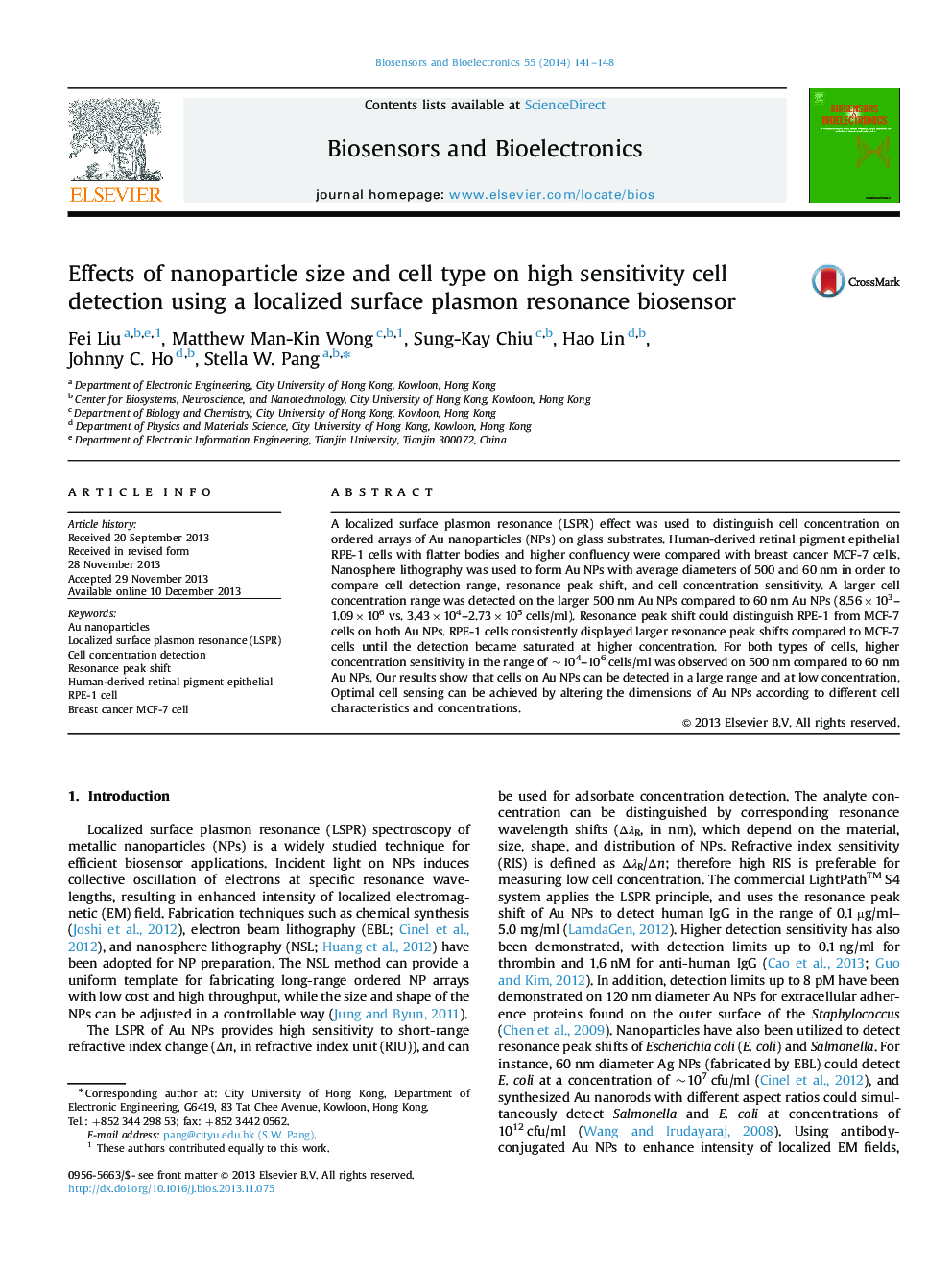| Article ID | Journal | Published Year | Pages | File Type |
|---|---|---|---|---|
| 866482 | Biosensors and Bioelectronics | 2014 | 8 Pages |
•Au nanoparticles (NP) with 500 and 60 nm diameters for cell concentration sensing.•Detection range and sensitivity depend on NP size and cell types.•Larger cell concentration range is detected on 500 than 60 nm Au NPs.•RPE-1 from MCF-7 cells could be distinguished by optical sensing.•Resonance peak shift provided large range cell detection at low concentration.
A localized surface plasmon resonance (LSPR) effect was used to distinguish cell concentration on ordered arrays of Au nanoparticles (NPs) on glass substrates. Human-derived retinal pigment epithelial RPE-1 cells with flatter bodies and higher confluency were compared with breast cancer MCF-7 cells. Nanosphere lithography was used to form Au NPs with average diameters of 500 and 60 nm in order to compare cell detection range, resonance peak shift, and cell concentration sensitivity. A larger cell concentration range was detected on the larger 500 nm Au NPs compared to 60 nm Au NPs (8.56×103–1.09×106 vs. 3.43×104–2.73×105 cells/ml). Resonance peak shift could distinguish RPE-1 from MCF-7 cells on both Au NPs. RPE-1 cells consistently displayed larger resonance peak shifts compared to MCF-7 cells until the detection became saturated at higher concentration. For both types of cells, higher concentration sensitivity in the range of ~104–106 cells/ml was observed on 500 nm compared to 60 nm Au NPs. Our results show that cells on Au NPs can be detected in a large range and at low concentration. Optimal cell sensing can be achieved by altering the dimensions of Au NPs according to different cell characteristics and concentrations.
